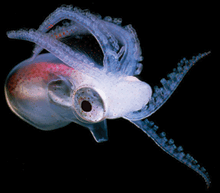 As preliminary data for our genome-wide recombination analysis (outlined in this post from Rosie), we want to sequence the whole genome of a single transformed clone in the next couple of months. The idea is to transform our standard KW20 Rd strain with DNA from one of the other completely sequenced strains (probably 86-028NP, possibly PittGG), select a single transformed colony, and sequence its genome.
As preliminary data for our genome-wide recombination analysis (outlined in this post from Rosie), we want to sequence the whole genome of a single transformed clone in the next couple of months. The idea is to transform our standard KW20 Rd strain with DNA from one of the other completely sequenced strains (probably 86-028NP, possibly PittGG), select a single transformed colony, and sequence its genome.This will provide us with all sorts of useful preliminary results:
- Show that we can indeed handle the type (and amount) of data we’ll be obtaining.
- Estimate the total amount of donor DNA a single recipient recombines (and fixes) into its genome.
- Estimate the length of recombination tracts (gene conversions) / the strength of “linkage”.
- Estimate mosaicism of donor and recipient sequences (mismatch repair).
- Estimate the transformation rates for different classes of single-nucleotide differences (for example, the number of A->T transformation events observed versus the total A->T differences between the strains)
In particular, item (2) will be crucial for estimating the total amount of sequencing we would need to measure transformation rates per polymorphism across the genome. Simple transformation assays with DNA from the multi-antibiotic resistant MAP7 strain suggest that possibly 20-50kb of DNA may be replaced in a single transformant, but this type of analysis is restricted to only a few different sites in the genome and is very roughly calculated.
The analysis of a single transformed genome will still be preliminary with regards to (3)-(5), for which we will want genome sequences for several independent clones. In the future we are likely to barcode and pool independent transformants, since we expect that a single lane of Illumina sequencing will be overkill for a single Haemophilus genome of less than 2 Mb (250X sequence coverage).
Anyways, one issue with producing the material for this first sequencing experiment is that we need to make sure that the clone we select comes from a cell that was indeed competent and did indeed get transformed. Since only a fraction of cells in a competent culture are competent, we would be wasting a lot of time and money, if we accidentally just re-sequenced our recipient genome.
In order for this to work, we need our donor strain to carry an antibiotic resistance marker. By selecting for recipients that become resistant, we can be sure the clone we select took up DNA that got recombined into the genome. (This may also create a bias for donor alleles near the selected site, due to “linkage”.)
To this end, I am doing the following:
- Made a couple strains (KW20, 86-028NP, and PittGG) resistant to novobiocin. I just did this. It worked like a charm thanks to the former postdoc having a well-organized lab notebook and a well-organized freezer box containing a tube with a NovR allele of gyrB already prepared for me. This was also my first time doing overnight transformations. I couldn’t believe how easy it was: Add a frozen aliquot of cells and some DNA to some sBHI media, let the cells grow overnight, and plate them the next day. There were plenty of resistant colonies this morning.
- Prepare DNA from the newly produced 86-028NP NovR and PittGG NovR strains. I’ll do this tomorrow from the overnight cultures I just inoculated.
- Transform KW20 with this DNA. I’ll use competent cells I already have tomorrow, after my DNA prep.
- Saturday, assuming I have NovR transformants, I’ll pick and grow up some transformed colonies overnight.
- Sunday, I can prepare this DNA, and that’ll be what we can send for sequencing!
(As a side note, 86-028NP indeed appears to already be resistant to another antibiotic, nalidixic acid. I will check to see if this resistance is transformable when I have the 86-028NP NovR DNA in hand.)

That's sweet!
ReplyDeleteWe should do a test sequence of the novR region in this transformant, to confirm that it does have some sequence from the donor strain. We'd want to look at a larger region than that covered by the short fragment you used to introduce the novR allele into the donor. It would be a big shame to sequence the novR transformant and find that it's a spontaneous novR mutant of the recipient Rd strain.
ReplyDelete